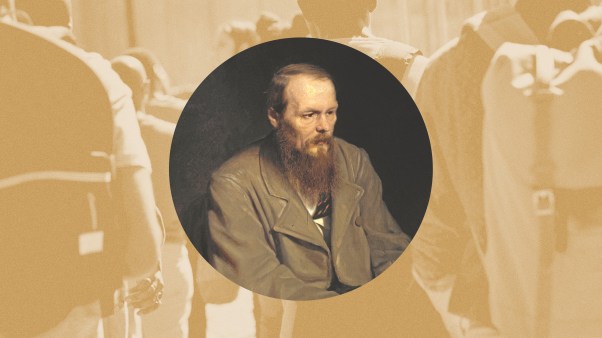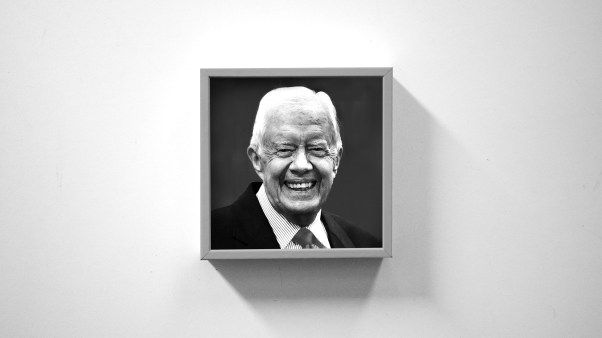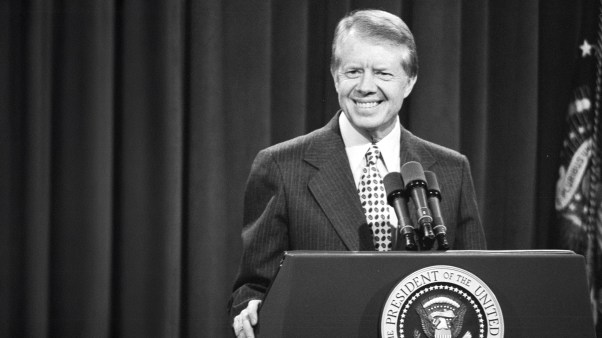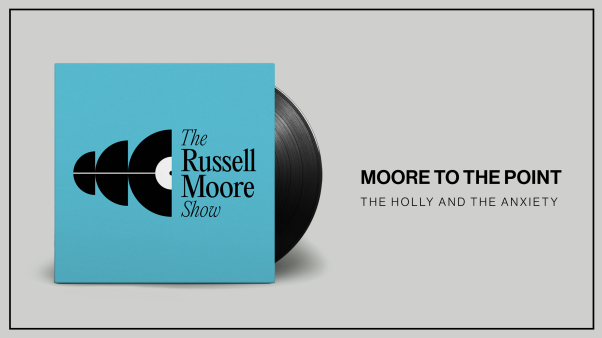Hundreds of names are carved on the walls of a small memorial chapel at King’s College, Cambridge. All died between 1914 and 1919, all of them students who fought in World War I. Between the dates are the words Quasi morientes et ecce vivimus, taken from 2 Corinthians 6:9, “dying, and yet we live on.”
While studying at Lincoln College, Oxford, I noticed a similar list. More than 50 names were ornately inscribed onto a wooden panel under the college crest in the common room. I marveled that a smaller college had lost this many students to the Great War and wondered about the scale of loss across England.
Before there were names on memorials, though, there was the aching absence, agonized waiting, dread, and then, for many, heartbreak of war. Armistice came in a bleak November. And it was out of this somber history that the Western church got one of its most widespread and beloved Christmas traditions: the Service of Nine Lessons and Carols.
In the midst of holiday pomp and celebration, this observance—often held on Christmas Eve in Anglican, Presbyterian, Catholic, and other denominational churches—rehearses the story of redemption with methodic yet beautiful simplicity. As the name suggests, the liturgy alternates “lessons” or passages from Scripture with “carols,” a mix of congregational carols and anthems offered by a choir or other musicians. These services can be the pinnacle of a church music program’s liturgical year, held in sanctuaries glittered with candlelight.
The narrative arc of the lessons places the familiar Christmas story in the context of the broader redemption story, and like the very candles flickering throughout a darkened sanctuary, the hope and joy that headline much of the Christmas season shine brighter against the acknowledgement of brokenness, pain, and waiting.
The Service of Nine Lessons and Carols is a beloved tradition rooted in healing, because it was forged in the fires of grief and suffering. Just months before the end of the war, it was King’s College, Cambridge, dean Eric Milner-White who faced the daunting task of planning a Christmas Eve service. In the safety of Cambridge, the echoes of war still rung in his own memory.
When the war broke out, the 30-year-old left his position at the school to serve, trading “the stillness and beauty of King’s Chapel for the noise, brutality and squalor of the French front line—the life of an army chaplain,” writes author Alexandra Coghlan in Carols From King’s.
Along with a generation of young men, Milner-White witnessed horrors in battle. Coghlan quotes the chaplain writing about the fireworks and noise from the German trenches: “We felt so powerless against those splitting cracks and roars, and dreamt of the metal tearing its way into the bodies of poor men.”
Milner-White returned to King’s College as dean in 1918 and had to consider how to tend to the emotional and spiritual wounds soldiers brought home. He began to formulate a service with the suffering and trauma of the last four years in mind, a service marked by beauty, simplicity, and truth.
“He didn’t doubt, I don’t think, the love of God or the presence of God. What he wanted to know was how to communicate it to people who had been brutalized and traumatized by this kind of experience,” said chapel dean Stephen Cherry in the BBC documentary 100 Years of King’s Carols.
An early version of the lessons and carols liturgy dates back to 1880, when Bishop Edward White Benson created the structure at Truro Cathedral and called it “Festal Service for Christmas Eve.” Milner-White’s adaptation shaped the service into the form most known today.
Over a century-plus of lessons and carols services, one of the most beloved elements is the opening hymn. The twinkling glow of candles and the mosaic of color from stained-glass windows illuminate the chapel. Out of the silence an angelic treble voice will sing unaccompanied the first verse of “Once in Royal David’s City”:
Once in royal David’s city
Stood a lowly cattle shed,
Where a mother laid her baby
In a manger for his bed:
Mary was that mother mild,
Jesus Christ her little child.
The arrangement is the same one composed for the lessons and carols service in 1919. In the verses that follow, the rest of the choristers join in a simple hymnic harmonization. The congregation joins them for the third verse, their voices filling the candlelit space. The fourth and fifth verses grow as the organ music swells beneath the voices.
The sixth verse crescendoes gloriously with the addition of a descant soaring above the choir, congregation, and organ. This final verse looks to the culmination of the redemption story: “Not in that poor lowly stable, / With the oxen standing by, / We shall see him; but in heaven, / Set at God’s right hand on high.”
This carol draws listeners into the service and the story that follows with a simplicity that is both tender and profound. The hymn introduces a Savior who is meek and mild, sympathetic to the world of grief in which he entered. “He was little, weak and helpless, / Tears and smiles like us he knew; / And he feeleth for our sadness, / And he shareth in our gladness.”
The hymn also dedicates two verses to heaven.
And our eyes at last shall see him,
Through his own redeeming love,
For that child so dear and gentle
Is our Lord in heaven above,
And he leads his children on
To the place where he is gone.
For a generation that had lost their sons, brothers, and husbands, these words and the tender beauty in which they were delivered must have brought profound comfort.
The traditional service at King’s begins with its first lesson in Genesis 3, where “God tells sinful Adam that he has lost the life of Paradise and that his seed will bruise the serpent’s head.” Each lesson is followed by a song related in some way to the text. “Their liturgical order and pattern is the strength of the service,” Milner-White wrote, “and prevents it becoming a recital of carols rather than an act of worship.”
The lessons go on to include God’s promise to Abraham in Genesis 22, two passages from Isaiah foretelling the coming Messiah, passages from Luke and Matthew telling the Christmas story, and finally John’s glorious account of the Incarnation, the Word made flesh. Then come two congregational hymns: “O Come, All Ye Faithful” and “Hark! The Herald Angels Sing.”
Another fixture in the service is Milner-White’s bidding prayer, which poignantly acknowledges loss and at the same time offers hope:
Let us remember before God all those who rejoice with us, but upon another shore and in a greater light, that multitude which no man can number, whose hope was in the Word made flesh, and with whom, in this Lord Jesus, we for evermore are one.
King’s College’s inaugural Festival of Nine Lessons and Carols was held shortly after World War I—still called “the Great War,” with the assumption that it was, in the words of H. G. Wells, the “war to end all wars.” Yet two decades later would bring another that would leave King’s College, as well as war memorials around the country, with another list of names.
By World War II, the service was broadcast on the radio, broadening its reach beyond the confines of Cambridge as a source of national comfort. The service proceeded, even though the stained-glass windows were temporarily removed to be kept safe from bombings. The radio broadcast reached not only the country but also the troops. Radio Times even records lessons and carols services taking place in German prisoner-of-war camps.
As the service’s popularity has grown globally, many churches and choral communities have added it to their repertoire. Some closely follow traditions from King’s, and others use the structure as a loose skeleton from which to build their own.
Why does this service hold up so well in times of grief? Rather than leading with the holly-jolly razzle-dazzle that can crush a bruised spirit during this season, it tenderly invites the congregant into stillness. Consider Psalm 46 with its descriptions of mountains falling into the heart of the sea, an image that resonates with anyone who has faced tragedy. The conclusion to this is “Be still, and know that I am God.”
The stillness of Nine Lessons and Carols brings with it a meticulous and systematic meditation on the ultimate source of hope. Familiar Advent passages take on fresh meaning when we’re given the chance to respond in singing or find ourselves transported in the beauty of a choral anthem.
When set in the context of the entire biblical narrative, they become even more poignant. Rather than skip to the “glad tidings of great joy,” we are forced to behold the tragedy of the Fall, the glimmers of hope in the promises of God, the majesty of the Incarnation, and the miracle of the Christmas story.
The Christmas story is not merely the stuff of Christmas pageants. Linger in its pages, and the hurting soul will find the agony of mothers who have lost children, the pain of barrenness, the shame of false accusation, the oppression of a people group, the plight of the refugee.
Linger further and discover, lying in a dusty manger, the incarnate God, who has taken on human flesh and human sorrow. Linger further still and behold him as he is now, “risen with healing in his wings.”
Mild he lays his glory by,
Born that man no more may die,
Born to raise the sons of earth,
Born to give them second birth.
Hark! The herald angels sing,
“Glory to the newborn king!”
Erin Jones is a freelance writer and founder of Galvanize and Grow Copywriting from Maryland. More of her writing can be found on erinjoneswriter.com.













